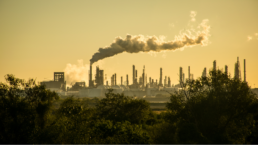In 2022, the relationship between wealth, emissions, and climate catastrophe has become ever clearer.
By Aviva Chomsky, TomDispatch
Three years after the end of World War II, diplomat George Kennan outlined the challenges the country faced this way:
“We have about 50% of the world’s wealth, but only 6.3% of its population. In this situation, we cannot fail to be the object of envy and resentment. Our real task in the coming period is to devise a pattern of relationships which will permit us to maintain this position of disparity without positive detriment to our national security.”
That, in a nutshell, was the postwar version of U.S. exceptionalism and Washington was then planning to manage the world in such a way as to maintain that remarkably grotesque disparity. The only obstacle Kennan saw was poor people demanding a share of the wealth.

Today, as humanity confronts a looming climate catastrophe, what’s needed is a new political-economic project. Its aim would be to replace such exceptionalism and the hoarding of the earth’s resources with what’s been called “a good life for all within planetary boundaries.”
Back in 1948, few if any here were thinking about the environmental effects of the over-consumption of available resources. Yet even then, however unknown, this country’s growing wealth had a dark underside: the slow-brewing crisis of climate change. Wealth all too literally meant the intensified extraction of resources and the production of goods. As it happened, fossil fuels (and the greenhouse gases that went with their burning) were essential to every step in the process.
Today, the situation has shifted — at least a bit. With approximately 4% of the world’s population, the United States still holds about 30% of its wealth, while its commitment to over-consumption and maintaining global dominance remains remarkably unshaken. To grasp that, all you have to do is consider the Biden White House’s recent Indo-Pacific Strategy policy brief, which begins in this telling way: “The United States is an Indo-Pacific power.” Indeed.
In 2022, the relationship between wealth, emissions, and climate catastrophe has become ever clearer. In the crucial years between 1990 and 2015, the global economy expanded from $47 trillion to $108 trillion. During that same period, global annual greenhouse-gas emissions grew by more than 60%. Mind you, 1990 was the year in which atmospheric levels of carbon dioxide (CO2) first surpassed what many scientists believed was the level of safety — 350 parts per million, or ppm. Yet in the 32 years since then, more CO2 and other greenhouse gases have been emitted into the atmosphere than in all of history prior to that date, as atmospheric CO2 careened past 400 ppm in 2016 with 420 ppm now fast approaching.
Recent Posts
“Arrest Now, Ask Questions Later”: Why Did L.A. ICE Agents Arrest and Jail U.S. Citizen Andrea Velez?
July 3, 2025
Take Action Now “They didn’t have vests that said ICE or anything. Their cars didn’t have license plates. … Just because of the color of our…
Trump’s Big, Beautiful Bill Is Naked Class War
July 3, 2025
Take Action Now Trump’s “Big, Beautiful Bill” trades tax cuts on millionaires for the dissolution of society.By Hamilton Nolan, In These Times…
Mayor Mamdani’s First Day, A Zero Hour Conversation With Richard Wolff
July 2, 2025
Take Action Now If elected, what would Mayor Mamdani do on his first day in City Hall? How would a democratic socialist govern as a big-city mayor?……
The U.S. Is Funding A Bloodbath At Gaza Aid Centers
July 2, 2025
Take Action Now The admin just gave $30M to GHF, the organization at the center of charges that Israel is weaponizing assistance and shooting at…




